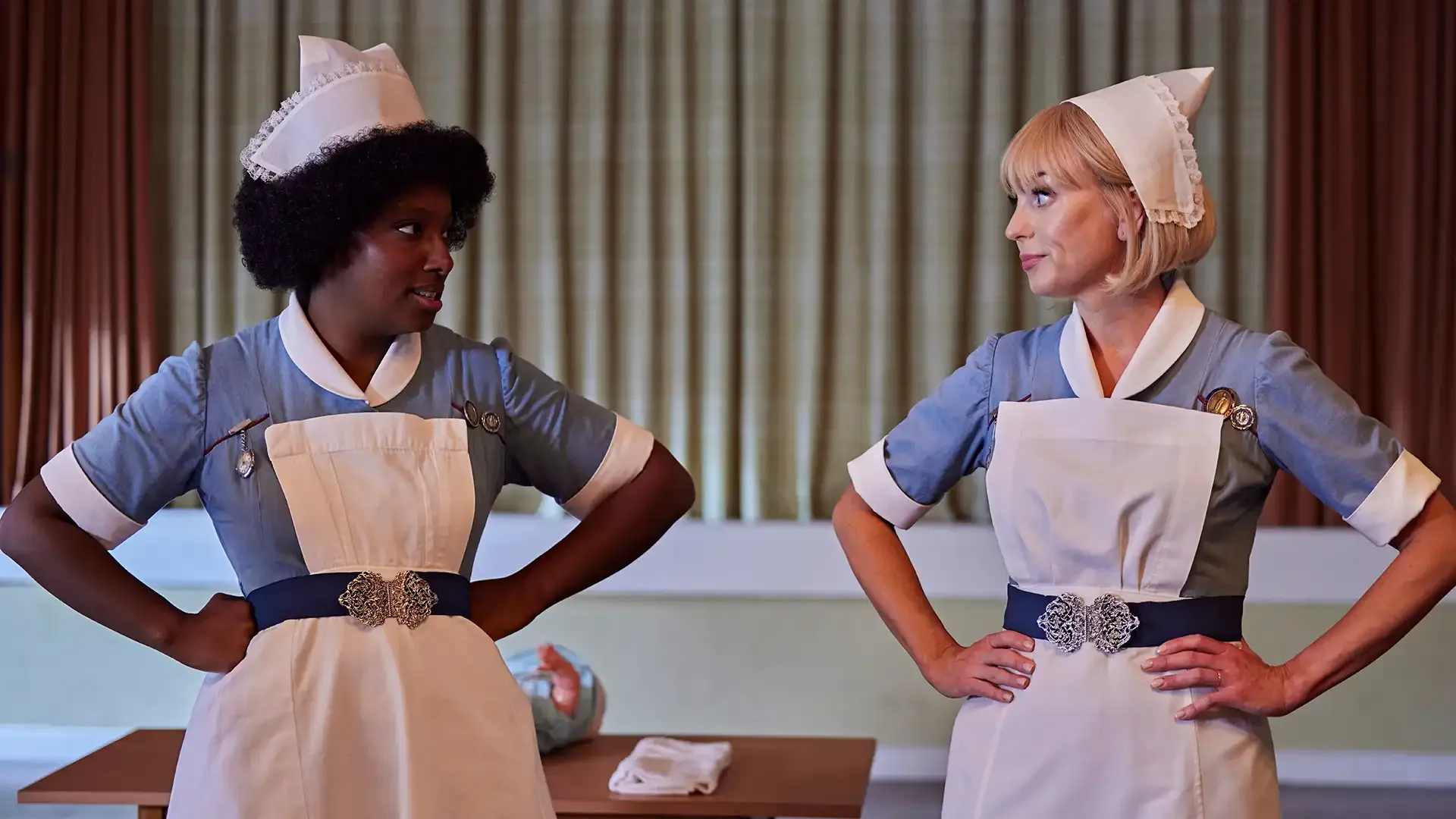Coral Bleaching: What To Know About a Global Tipping Point
Even if you’ve never gone scuba diving or peered into a tropical tank at your local aquarium, you know that coral reefs are the ocean’s art show. They’re all bright, colorful and full of life — right?
Unfortunately, that may not be the case forever. As the Earth’s temperature rises, these animals go through a process called coral bleaching that leaves them looking pale — and sometimes, they don’t bounce back.
To find out what this means for coral reefs and the people, animals and entire ecosystems that depend on them, host Maiya May is jumping right in — literally. In “Weathered: Earth’s Extremes,” Maiya visits environments most impacted by our changing climate, sharing her perspective of hope even when things look grave. Here’s a closer look at what she discovers about coral bleaching in Episode 1!
Full Episode
Under The Microscope: The Science of Coral and Bleaching Events
To understand the science behind coral bleaching, it’s important to know what’s in front of your scuba goggles when you’re looking at a coral reef.
Although they may look like plants at first glance, corals are actually ancient animals. Researchers have found them in fossils that are more than 400 million years old. Since then, these colorful critters have evolved into the reef architects we know today — and those reefs are unique, too. They’re not just one of the most productive and biodiverse ecosystems on the planet, hosting at least 25% of all marine life; they’re also the largest biological structures on Earth.
The wild and wonderful shapes we know are formed by the tiny living polyps of a group known as hard corals. They attach themselves to rocks and secrete “skeletons” made of calcium carbonate, a chemical compound you might have in your pantry for heartburn relief. These skeletons grow and expand until they form reefs that can weigh several tons — a process that can take up to 30 million years.
But how do those tiny polyps make all of that calcium carbonate? The secret is colorful, microscopic algae called “zooxanthellae.” These little buddies have a symbiotic relationship with the coral polyps: The corals provide a safe environment while the algae perform photosynthesis. That’s absolutely crucial for the polyps, as it creates the food and energy they need to survive — not to mention the calcium carbonate that helps them grow.
What is Coral Bleaching?
This is where things get tricky, as Maiya discovers in “Weathered.” The algae like a comfortable work environment — and when oceans get too warm (around 90° F or 32° C), they start producing toxic chemicals instead of healthy compounds. This is how bleaching begins.
To save themselves, corals expel the colorful algae that they need to create food and grow. What’s left behind is a white or gray structure that looks dead — but at that point, bleached coral is still alive. However, corals can only last about eight weeks without the food they get from their algae friends. If conditions don’t improve, the result can be dramatic: permanent coral mortality. That spells bad news for the entire coral reef ecosystem.
As Maiya explains, coral bleaching isn’t new. In fact, healthy coral reefs can even bounce back from a little algal altercation. The problem is that coral bleaching events are happening more frequently and with less time in between, which means the corals don’t have time to recover before the algae is at it again.
Frequency is the single most important factor in determining whether we’ve reached a “tipping point.” Tim Lenton, who pioneered the concept, tells Maiya that a tipping point is “a threshold which, when we pass it, we trigger abrupt and often irreversible change in a key part of the climate system.” He says coral reefs are one of the thresholds that we’re most at risk of crossing. (Want to read Tim’s paper as seen in the show? You can find it here.)
So, how did we get to this tipping point — and what’s happening as a result?
What Causes Coral Bleaching?
Think of corals as that friend who gets stressed easily. They’re sensitive to shifts in temperature, light or nutrients — and when they get frazzled, their go-to move is bleaching.
That means one of the underlying “causes” of bleaching is really just change. Unfortunately, there’s a lot of that going around.
For example, in “Weathered,” Maiya talks to marine science experts who were hard at work preparing for ocean temperature increases of 1-2° C in certain areas, but now they’re seeing a 3° change. One degree of difference might not seem like a big deal — unless you’re a coral, that is. This shift is enough to stress the polyp/algae relationship and lead to bleaching in coral species around the world.
However, while heat is the leading cause, it’s not the only one. In January 2010, ocean temperatures in the Florida Keys dropped 6.7° C lower than average, causing a bleaching event that led to coral mortality — so cold is a problem, too. Other potential causes include:
Runoff and pollution.
Overexposure to sunlight.
Extreme low tides.
What Are the Impacts of Coral Bleaching?
As bleaching events increase in severity and frequency, we’re seeing that coral species loss could impact just about everything, including:
Biodiversity.
Human diets.
Jobs and businesses.
Medicine discovery and development.
Shoreline protection.
To get an idea of what that could look like, take a look at these estimates from the National Oceanic and Atmospheric Administration (NOAA):
Humans: One billion people worldwide benefit from coral reefs’ ecosystem services, like acting as a source of food or business. Every single one of these people could be impacted by ongoing bleaching.
Finances: The total economic value of coral reefs in the U.S. alone is $3.4 billion.
Safety: Coral reefs help prevent property damage and protect both economies and human life. That’s because happy, healthy coral reefs can absorb up to 97% of a wave’s energy, protecting shorelines from the strength of the sea.
It’s no exaggeration to say that the impacts of coral bleaching go far beyond the marine ecosystem to touch nearly every part of life on Earth.
Support your local PBS station in our mission to inspire, enrich, and educate.
The State of Coral Reefs Today
In “Weathered,” you’ll learn that an estimated 50% of the world’s corals have already been lost to mass bleaching and other issues. Maiya talks to a marine science researcher who points out that only 2 to 5% of the world’s reef area still has living coral cover — down from 30 to 60% as recently as the 1980s. On top of that, a Global Coral Reef Monitoring Network (GCRMN) and United Nations Environment Programme report found that about 14% of the world’s coral reefs disappeared between 2009 and 2018 — a loss primarily caused by one mass bleaching event after another.
One particularly important example is the Great Barrier Reef. In 2022, bleaching had affected a startling 90% of assessed coral, according to PBS News. If that’s happening in the planet’s largest coral reef ecosystem, it probably comes as no surprise that 22 coral species worldwide are threatened and two are endangered.
The growing loss can be felt all over the world. Widespread coral bleaching occurs in places such as:
Florida.
The Caribbean.
Brazil.
Mexico.
El Salvador.
Costa Rica.
Panama.
Columbia.
Fiji.
Tanzania.
Kenya.
And it just keeps going. In April 2024, NOAA confirmed the fourth global coral bleaching event on record — the second in the past 10 years. On top of that, research by the World Economic Forum found that we could lose 99% of all coral colonies by 2030 without drastic changes. The GCRMN and United Nations Environment Programme report also found that severe bleaching is expected to occur annually by 2034 — and by that point, recovery may be impossible.
What Can We Do To Stop Coral Bleaching?
The good news is that although coral reef bleaching is a serious problem, the situation isn’t hopeless yet. Maiya says she’s more hopeful now than ever, pointing out that exponential change isn’t always negative — especially if we know what we’re dealing with.
For example, although many tipping points are a bad thing for our planet, there are good ones, too. So-called positive tipping points are another idea from Tim Lenton, and they describe large-scale societal changes that push us closer to saving Earth’s climate. Tim says one example is the shift to electric vehicles.
And just like there are still pockets of colorful coral dotting our oceans, there are always pockets of hope in the conversation about the environment. After all, nature is often more resilient than we give it credit for. The GCRMN and United Nations Environment Programme report noted that, after a mass bleaching event in 1998, hard coral cover didn’t just bounce back but actually exceeded its pre-1998 levels. It also pointed out that some areas — including Kenya, Australia and India — are home to particularly resilient corals that might have a better chance of surviving climate change.
In “Weathered,” Maiya gets to see this idea in action. She watches experts take a coral that has already survived a heat wave and put small parts of it in multiple areas, much like you might cut parts off a plant to end up with more plants. The secret here is to speed up evolution. By fragmenting and “planting” these corals, researchers are taking decades off of the time it takes for these colorful critters to reach maturity and encouraging resilient traits in growing reefs.
Maiya also joins marine science experts who are helping corals wait out the heatwave in onshore nurseries. It’s a rush to find and protect as many coral species as possible — but when it works, it gives whole reef ecosystems a leg up in the race for survival.
Want to learn more about the recovery and resilience of coral reefs? Check out this Changing Planet special on PBS!
There are plenty of other coral restoration and protection projects going on, too. Here are just a few examples:
Florida’s Coral Reef Evaluation and Monitoring Project.
Hawaii’s Coral Reef Program.
That leaves one big question: What can you do to help protect coral reefs from bleaching and other threats?
Fortunately, you don’t have to live by the ocean to lend it a helping hand. Check out these ways to keep coral colorful:
Conserve water.
Keep chemicals and other pollutants out of waterways.
Improve your energy efficiency.
Recycle trash appropriately.
Don’t buy living or decorative coral.
Perhaps most importantly, join Maiya in her perspective that’s as full of hope as the reefs are full of life. “I like to think that we’re pretty good at innovating,” she says, “which fuels my optimism.”
Learn More About Coral Reefs and Other Vital Ecosystems
Right now, we have the opportunity to push our planet’s future in the right direction. Coral reefs are just one example of an ecosystem that needs help — and with dedicated people like Maiya on the case, all of these stories will be told.
Just remember that you’re part of the story, too. The more you learn about topics like coral bleaching, the better prepared you are to be part of the positive tipping points.
Ready to learn more? Join Maiya on her worldwide travels to see how people, places and the whole planet are affected by climate change — and why a better future is closer than you think. Start watching the latest season of “Weathered” today!

The PBS 'What to Watch' Weekly Newsletter
What to Watch delivers the best shows and content PBS has to offer each week.



